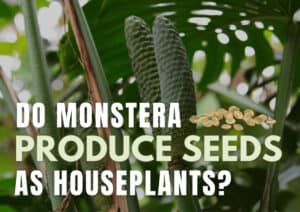Monstera Siltepecana vs Monstera Peru: How Do They Differ?
-
Chris Dosser
- March 25, 2023
If you buy something using the retail links in our articles, sometimes we earn a small affiliate commission. This does not impact the products we recommend.
Monstera siltepecana and Monstera peru may look vaguely similar at first glance, but their appearances each have distinctive differences – their leaves, growth pattern and overall structure have slight but clear variance between one another. In addition, both plants require slightly different care methods to achieve optimal growth.
Check out the identification tips below to learn of the differences between the two.
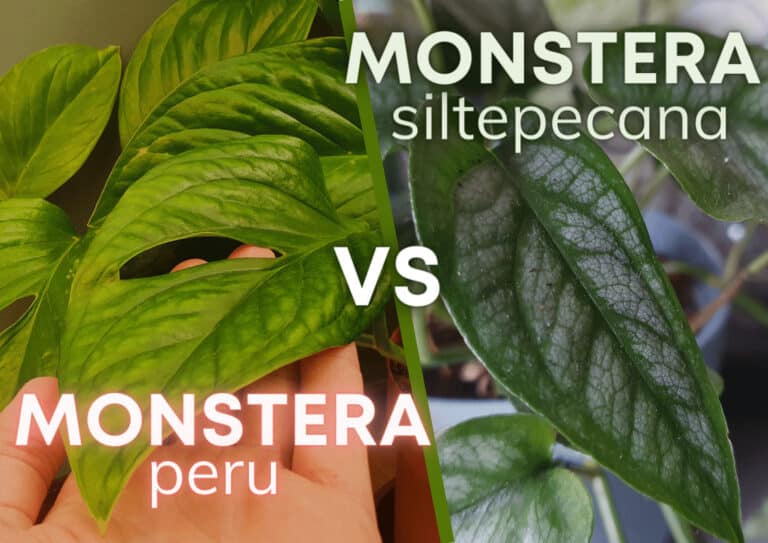
How to tell the difference between Monstera siltepecana and Monstera peru
Leaves
An obvious difference lies in the color of the leaves of each plant. Monstera siltepecana’s leaves often change color as they grow, progressing from a deep green to a silver-grayish shade as they mature. On the other hand, Monstera peru’s leaves maintain a solid light green appearance throughout their lifecycle.
The texture of Monstera siltepecana leaves are different to Monstera peru. Peru has glossy, smooth leaves that look and feel waxy to the touch, with an uneven surface created by deep veins that give the leaf an uneven appearance. The tissue of M.peru is also far thicker than M.siltepecana, and side-by-side Monstera peru foliage is wider and grows to larger dimensions than M.siltepecana.
Fenestrations are far more common on Monstera peru leaves and will even appear on a young plant, whereas fenestrations extending from the mid-rib will generally only appear on mature Monstera siltepecana plants.
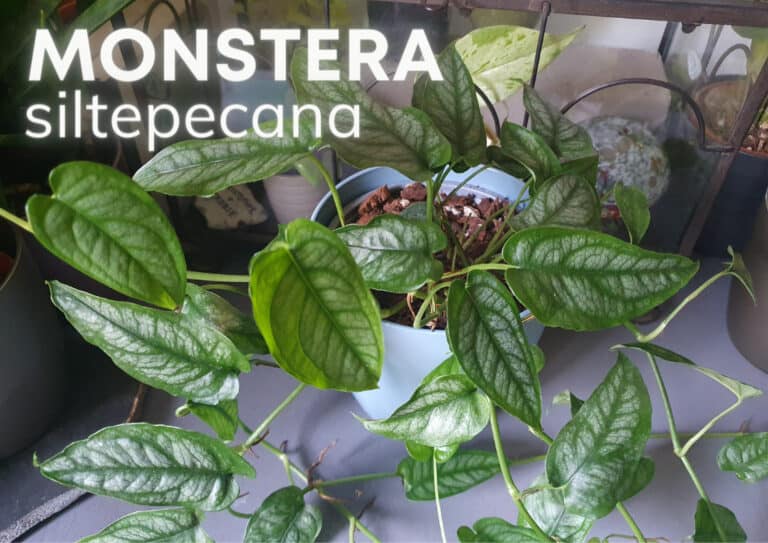
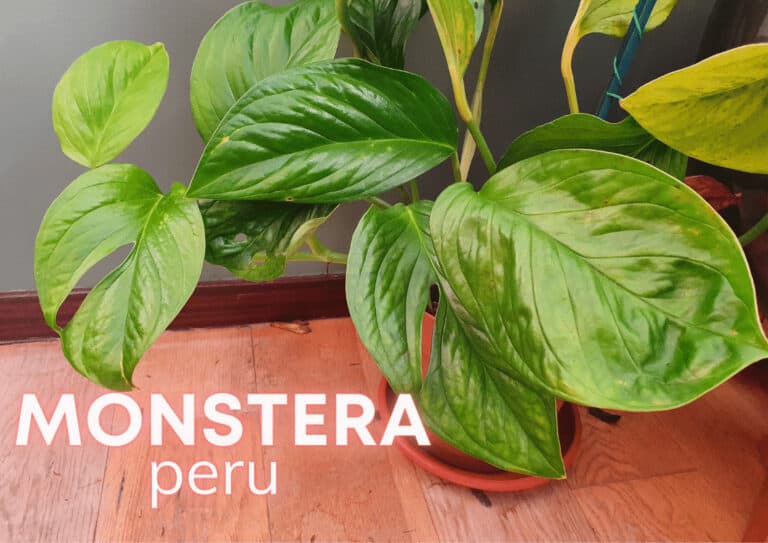
Overall form and structure
Both Monstera siltepecana and peru are climbing plants, and can eventually grow upwards of several meters.
However, M.siltepecana begins as a terrestrial grower in its juvenile stage and requires structural support to climb vertically. For our plant we actually place the pot on top of a wardrobe and allow the foliage to drape down.
Conversely, peru has the strength to support its leaves as they grow upwards and doesn’t need help to begin climbing.
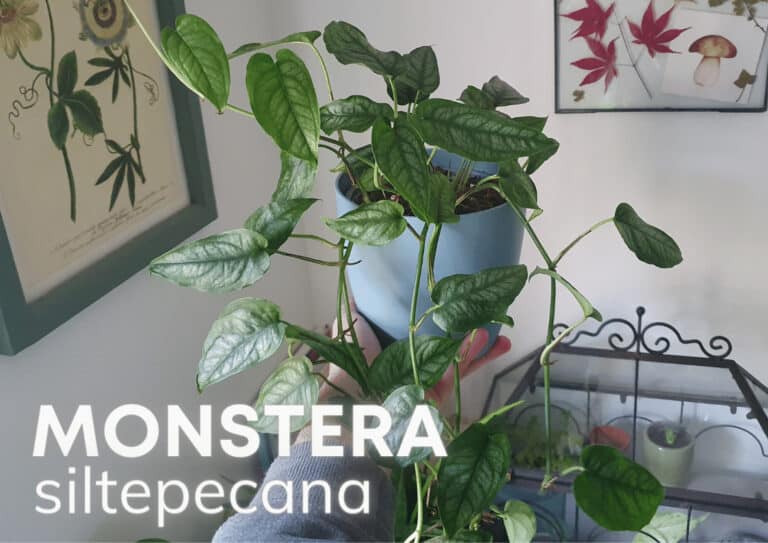
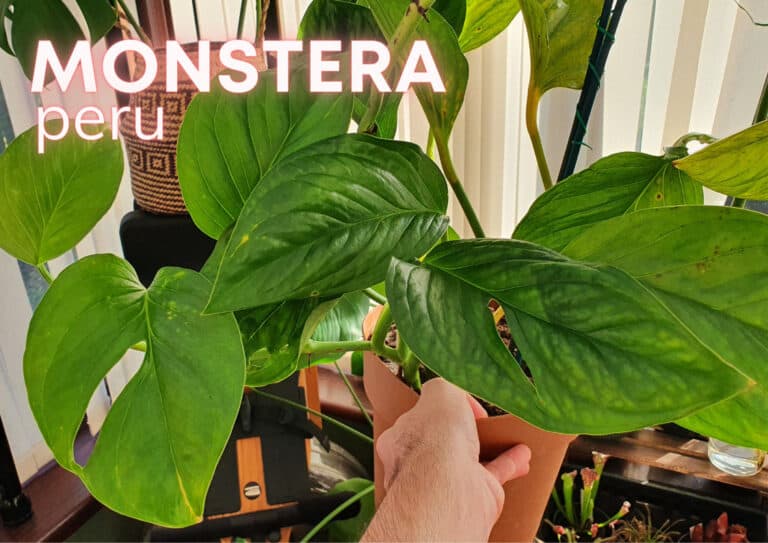
Flowers and fruits
Both Monstera Siltepecana and Monstera Peru have similar-looking blooms, but they are not technically flowers.
Instead, they consist of a spathe and a spadix. The spathes are special leaves that are uniquely folded, and within them, the spadix sits and grows. These create inflorescence.
It may be too difficult to tell apart the inflorescence of these two plants. Regardless, you are unlikely to see flowers in Monstera houseplants, as they are incredibly uncommon outside of the wild.
Monstera Siltepecana does not produce fruits, while a few types of Monstera Peru, especially in the wild, do. It’s not commonly eaten but still edible and tastes like a mix of pineapple and banana. These fruits are white berry clusters that grow in green pods, covered in scale-like skin. Most houseplant Monsteras will not produce fruit, instead only doing so in the wild.
Our Favorite Monstera Plants And Supplies On Etsy
Monstera siltepecana care tips
Monstera siltepecana are a flowering species native to Central America and Mexico, mostly in tropical biomes. It is a vining plant and is relatively fast-growing.
Monstera siltepecanas like bright indirect sunlight, with a few hours of direct morning sunlight preferably. Most plants of this species will do well in an east-facing window. Still, this plant can survive in partial shade, and in some parts of the wild, it does in full shade, too.
All Monstera plants need a delicate balance of moisture in their soil to prevent both root rot and dehydration. As a tropical plant, Monstera siltepecana needs to be watered whenever its soil loses its moisture. As a general rule, the topsoil should always be slightly damp to the touch and should not be allowed to dry out completely.
For the most part, siltepecana prefers a well-draining potting mix. It is recommended that an airy mix is created with pumice, peat moss, perlite, and add-ins like charcoal and bark. Some may choose to add sphagnum moss to promote improved humidity. The most important party, though, is the use of large, chunky mix-ins that create air pockets.
Monstera siltepecana does best in environments that mimic its natural ones. Its temperature range should be between 60 and 95 °F. The plant also prefers high humidity levels, usually above 60%.
Monstera peru care tips
The Monstera peru (also called the Monstera karstenianum), is named after the place where it is cultivated and found: the South American country of Peru. It is also a fast-growing plant but grows even faster than the siltepecana.
Monstera peru prefers lighting that mimics their outdoor environment, where they grow beneath a canopy of leaves. As such, they like bright, indirect sunlight and can do well in a north-facing window. However, this plant can be sensitive to sunlight and may become easily scorched or burned, and as such, should not receive direct sunlight.
Because of its thick leaves, the Monstera peru is notably drought-tolerant, more so than most of its fellow genus species. As such, its soil should be allowed to dry out entirely before it is watered again. If it sits in wet soil for too long, it is likely to develop dangerous root rot. Be sure that the first two inches of the potting soil are entirely dry before you water it again!
The Monstera peru is a typical epiphyte and prefers well-draining soil that is nice, airy and rich soil. Coco coir, orchid bark, and coco coir can be added to a typical potting mix to create a healthy soil mixture. This allows for good drainage and airflow that the plant’s relatively short roots can still access.
For the most part, the Monstera peru prefers temperatures and humidity levels that mimic its natural environment in the wild. The plant is tropical, so temperatures should be between 60 and 85 °F, and humidity should be high, more than 60%.
Before you go…
Monstera siltepecana and the Monstera peru may be of the same genus, but there is plenty to set them apart. Their leaves have different colors and textures; only one bears fruit, and they grow differently. The former requires support to climb, while the latter climbs independently.
In addition, both plants have similar but slightly different care requirements. As such, you should research the plant you have to ensure that you meet its needs. It’s not safe to assume that similar plants will have the exact same needs!

Chris Dosser
Co-Founder of Eden Indoors
Chris is a self-taught horticulturist with over a decade of experience caring for houseplants and creating lush, thriving indoor oases. He specializes in Monstera, and by self admission has a serious problem with buying and propagating rare indoor plants!
Similar Posts
Do Monstera Produce Seeds As Houseplants? Unveiling The Truth
The Monstera genus are popular houseplants due to their stunning foliage and robust nature, but are they able to produce seeds while being grown indoors?
Do All Monstera Species Get Fenestrations As They Age?
Monstera plants are well-known for their beautiful fenestrations, but when do they occur during the plant's development, and do all species develop them?

